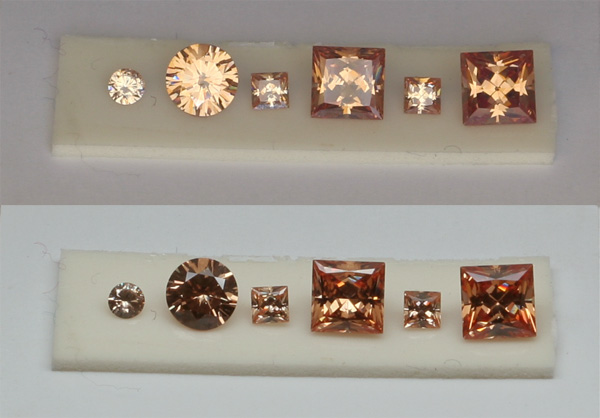Hello everyone,
Newbie here. I guess I should have done even more research before we purchased (one week ago). I bought an ideal cut .90 RB G color SI (the center of a 3 stone ring). When I hold out my hand to look at my ring, it appears darker and more dull in the middle of the stone...just not as sparkly as I would have expected. However, when I had my sister and mom try on the ring and then I look at it, I can see that it is very sparkly and white loooking. My mom and sis did say that they can see what I am talking about when they look at the ring on their own finger, but not when I have it on....Any ideas? Sounds weird, right? I have a GIA certified diamond (the certificate doesn''t have crown or pavillion angles on it), but the table is 58% and the depth is 63%. I was thinking that maybe it''s too deep. The appraisal and the GIA certificate get mailed out together (I just picked up the ring on Friday), so I don''t have them to look at. I''m not sure if I''ve given you enough info to make any suggestions...I don''t *think* it''s a case of fish eye, but ...
Oh, and is it typical that the ring will look really white under fluorescent lighting?
Thanks everyone! Wish I came here first!
Jen
Newbie here. I guess I should have done even more research before we purchased (one week ago). I bought an ideal cut .90 RB G color SI (the center of a 3 stone ring). When I hold out my hand to look at my ring, it appears darker and more dull in the middle of the stone...just not as sparkly as I would have expected. However, when I had my sister and mom try on the ring and then I look at it, I can see that it is very sparkly and white loooking. My mom and sis did say that they can see what I am talking about when they look at the ring on their own finger, but not when I have it on....Any ideas? Sounds weird, right? I have a GIA certified diamond (the certificate doesn''t have crown or pavillion angles on it), but the table is 58% and the depth is 63%. I was thinking that maybe it''s too deep. The appraisal and the GIA certificate get mailed out together (I just picked up the ring on Friday), so I don''t have them to look at. I''m not sure if I''ve given you enough info to make any suggestions...I don''t *think* it''s a case of fish eye, but ...
Oh, and is it typical that the ring will look really white under fluorescent lighting?
Thanks everyone! Wish I came here first!
Jen

















300x240.png)